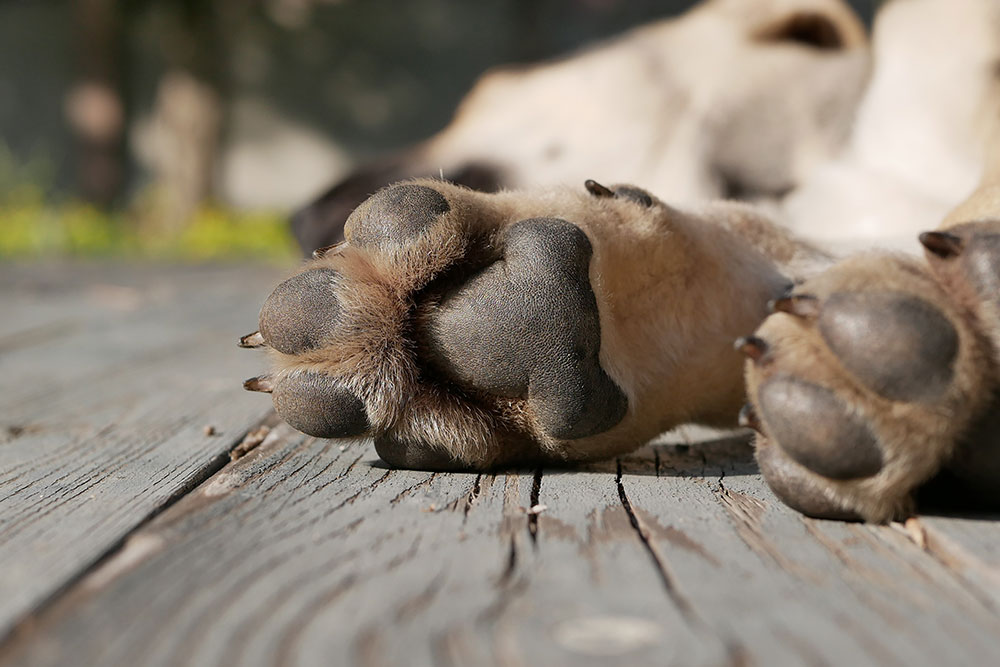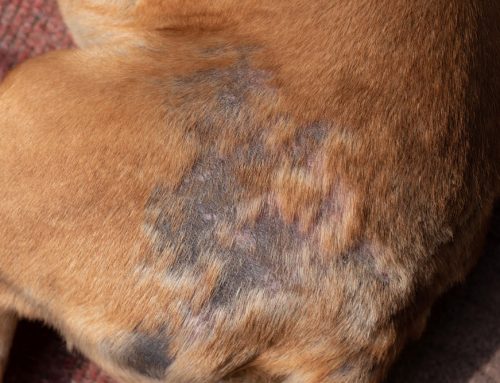Safe Steps: Protecting Your Dog from Torn Pads and Nail Damage
Dogs are built to move- from enthusiastic zoomies in the backyard to long hikes on the trail. But just like we wouldn’t run a marathon in flip-flops, our dogs need a little foot support, too. Paw pads and toenails might not be the most glamorous parts of a dog’s anatomy, but they do a lot of heavy lifting (literally). When they’re injured, it’s not just uncomfortable- it can really limit your dog’s mobility and quality of life.
At Valley Center Veterinary Clinic, we know that foot injuries are more than a nuisance. They’re painful, potentially serious, and often preventable. Here’s how to keep your dog’s paws and nails healthy, and what to do if things go wrong.
Why Paw Pads and Toenails Matter
Paw pads are tough by design. They’re built to cushion your dog’s steps, provide traction, and protect the bones and joints in the feet. Toenails, while not quite as tough, are also important- they help with balance, grip, and movement. But both pads and nails are prone to injuries that can range from annoying to downright debilitating.
Common Causes of Torn Pads and Broken Toenails
- Rough Terrain: Hot pavement, ice, gravel, or rocky trails can wear down paw pads and cause tears.
- Accidental Snags: Nails can catch on carpets, deck boards, or uneven surfaces and snap or split.
- Medical Conditions: Skin infections, allergies, or autoimmune disorders can weaken the nails or pad tissue, making injuries more likely.
Whether it’s a quick snag on the porch or a marathon fetch session on concrete, once there’s an injury, your dog is going to let you know- often dramatically- once they’ve stopped having fun. Some pets will dig or run until their nails fall off, so you may need to stop them before injury occurs.
Spotting the Signs of Injury
Dogs can’t tell you they’ve hurt their foot, but they usually don’t try to hide it either. Here’s what to watch for:
Torn Paw Pads
- Limping or avoiding putting weight on a foot
- Constant licking of the paw
- Bleeding or raw spots on the pad
- Flinching or pulling away when the paw is touched
Broken Toenails
- Visible splits or broken nails
- Swelling or redness near the nail bed
- Sensitivity or yelping when the foot is handled
- Chewing or licking the affected foot
- Small spots of blood on your floor
What Happens If You Don’t Treat It?
Minor injuries can become major if ignored. Torn pads can get infected, which slows healing and causes chronic pain. Broken nails, especially if they’re jagged or deeply cracked, can damage the nail bed or lead to infections that are tricky to treat.
Think of it like walking around with a split toenail in a gravel driveway- you wouldn’t want to, and neither does your dog. And consider the location: a foot injury that is slathered in your dog’s drool and then walked through the dirt is basically guaranteed to become infected.
How We Diagnose Foot Injuries
If your dog shows signs of a paw or nail injury, a vet visit is your best next step. At Valley Center Veterinary Clinic, we take a thorough, methodical approach:
- Visual Exam and Palpation: To check pain points and assess the extent of damage
- X-Rays: If there’s concern about underlying fractures or joint involvement
- Culture Tests: To identify infections that may need targeted antibiotics
Treatment Options
We tailor treatment based on how serious the injury is. Here’s what we might recommend:
For Torn Paw Pads
- Cleaning and Bandaging: Essential to prevent infection and support healing
- Pain Relief: Anti-inflammatory medications help reduce pain and swelling
- Antibiotics: If there’s an infection or high risk of one
- Cold Laser Therapy: A non-invasive treatment that promotes faster healing by stimulating cellular repair
For Broken Toenails
- Nail Trimming or Removal: If the nail is badly damaged, trimming or even full removal may be needed to prevent further trauma
- Bandaging: To protect the exposed nail bed
- Cauterization: To stop bleeding and prevent infection
- Antibiotics: As needed for infected or high-risk injuries
Regardless of the type of injury, a cone (e-collar) is a requirement to prevent further licking or damage to the foot. Learn more about Cracked, Broken, or Torn Nails in Dogs.
How This Affects Daily Life
Your dog might need some downtime- and soft surfaces- while recovering. This could mean shorter walks, using booties outside, or even a makeshift doggy slipper inside the house. The goal is to reduce pressure on the injury while healing takes place.
Smart Prevention Strategies
The good news? Most paw and nail injuries are preventable with a few easy habits.
- Trim Nails Regularly: Aim for every 2–4 weeks. If you’re unsure how, the AKC offers a great guide.
- Use Protective Gear: Booties or paw wax can shield paws from hot pavement, icy sidewalks, or abrasive surfaces.
- Check Paws Often: Give your dog’s feet a quick once-over during weekly grooming sessions. If you aren’t sure what you’re looking for, click here to learn more about Dog Nail Anatomy.
- Keep Floors Safe: Ensure play areas are free from hazards like broken decking, exposed nails, or sharp gravel.
Supporting Healing at Home
Simple environmental changes can go a long way:
- Use ramps or pet stairs to minimize jumping
- Lay down soft rugs or mats to cushion steps indoors
- Provide orthopedic or padded bedding to reduce pressure on healing paws
When It’s Something More Serious
Occasionally, recurring injuries or unusual symptoms point to deeper health issues. Nail bed tumors, immune-related conditions, or chronic infections need professional attention and ongoing management. If your dog has repeated problems or you notice odd changes in their paws or nails, bring them in for a closer look.
Before Your Appointment
To help us help your dog, here’s what to bring:
- Notes on Symptoms: When they started, how often they occur, and what you’ve noticed
- Photos or Videos: These are incredibly helpful if the symptoms come and go
- Your Questions: No need to hold back- ask anything, from treatment options to prevention tips
Common Questions About Dog Paw and Nail Care
Q: How often should I check my dog’s feet?
A: Once a week is a good rule of thumb. It’s also a great time to sneak in a quick nail trim or clean off any dirt or debris.
Q: Can I use regular nail clippers on my dog?
A: No- human clippers aren’t strong enough and can split the nail. Use clippers made specifically for dogs.
Q: What if I accidentally cut the quick?
A: It happens! Apply styptic powder to stop the bleeding. If you’re unsure how to proceed, give us a call.
We’ve Got Your Dog’s Back (and Feet)
At Valley Center Veterinary Clinic, we’re here to help with everything from split nails to tricky pad injuries. If something seems off with your dog’s feet- or if you just want to make sure you’re doing everything right- book an appointment with us. Together, we’ll keep those paws healthy, strong, and ready for your dog’s next adventure.








Leave A Comment